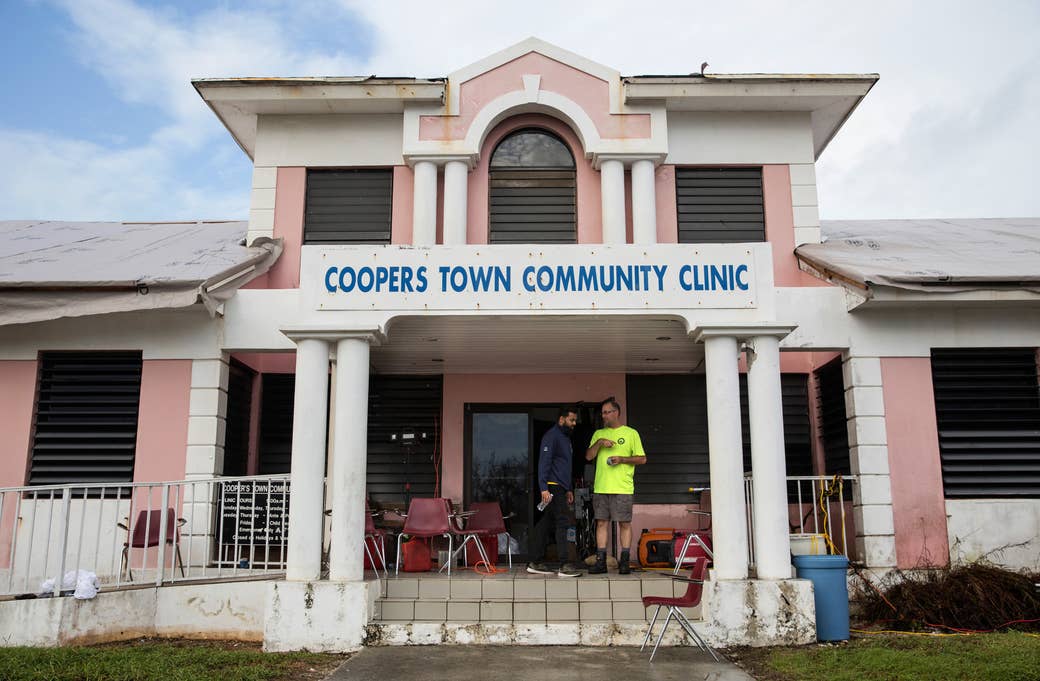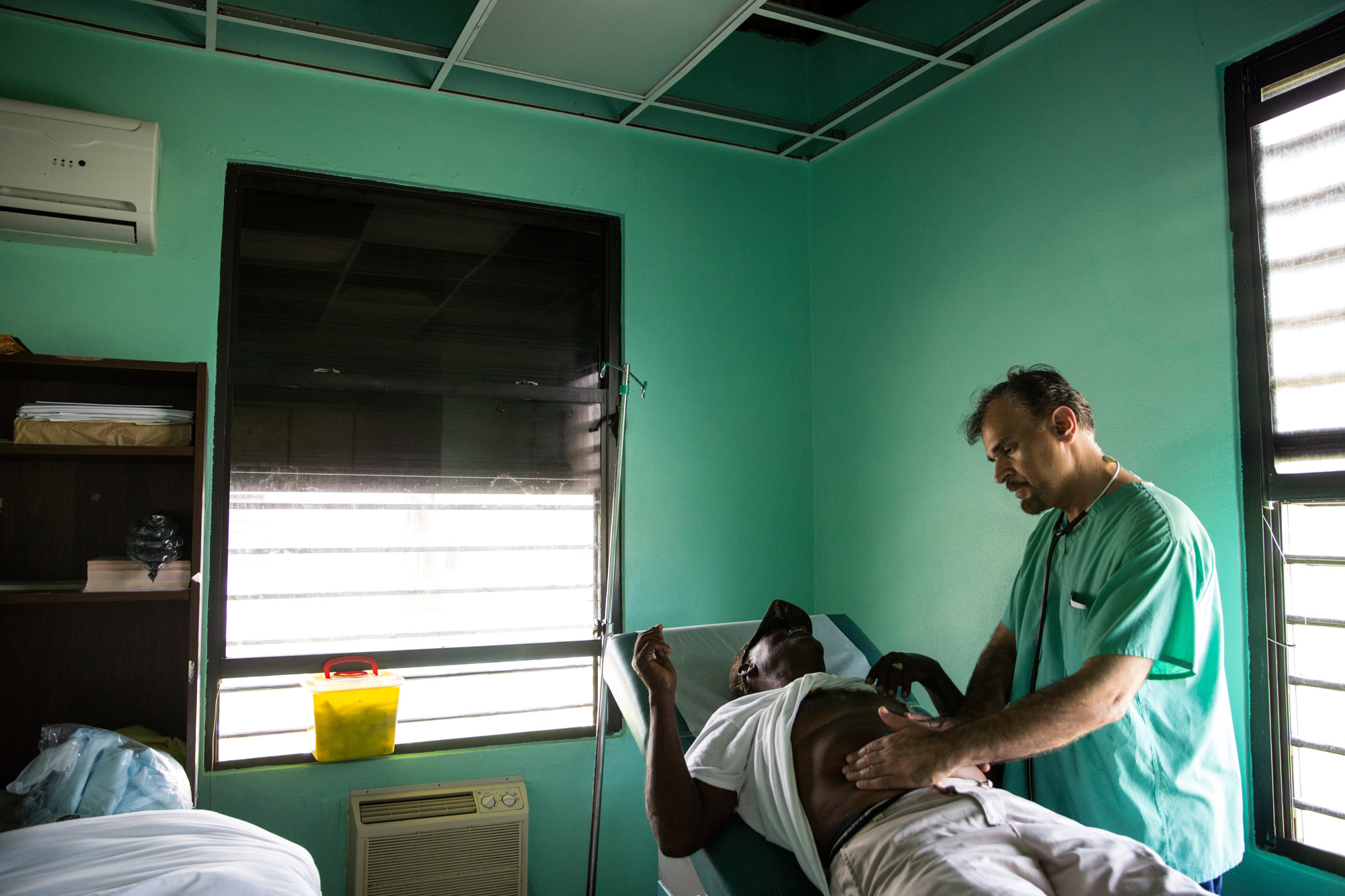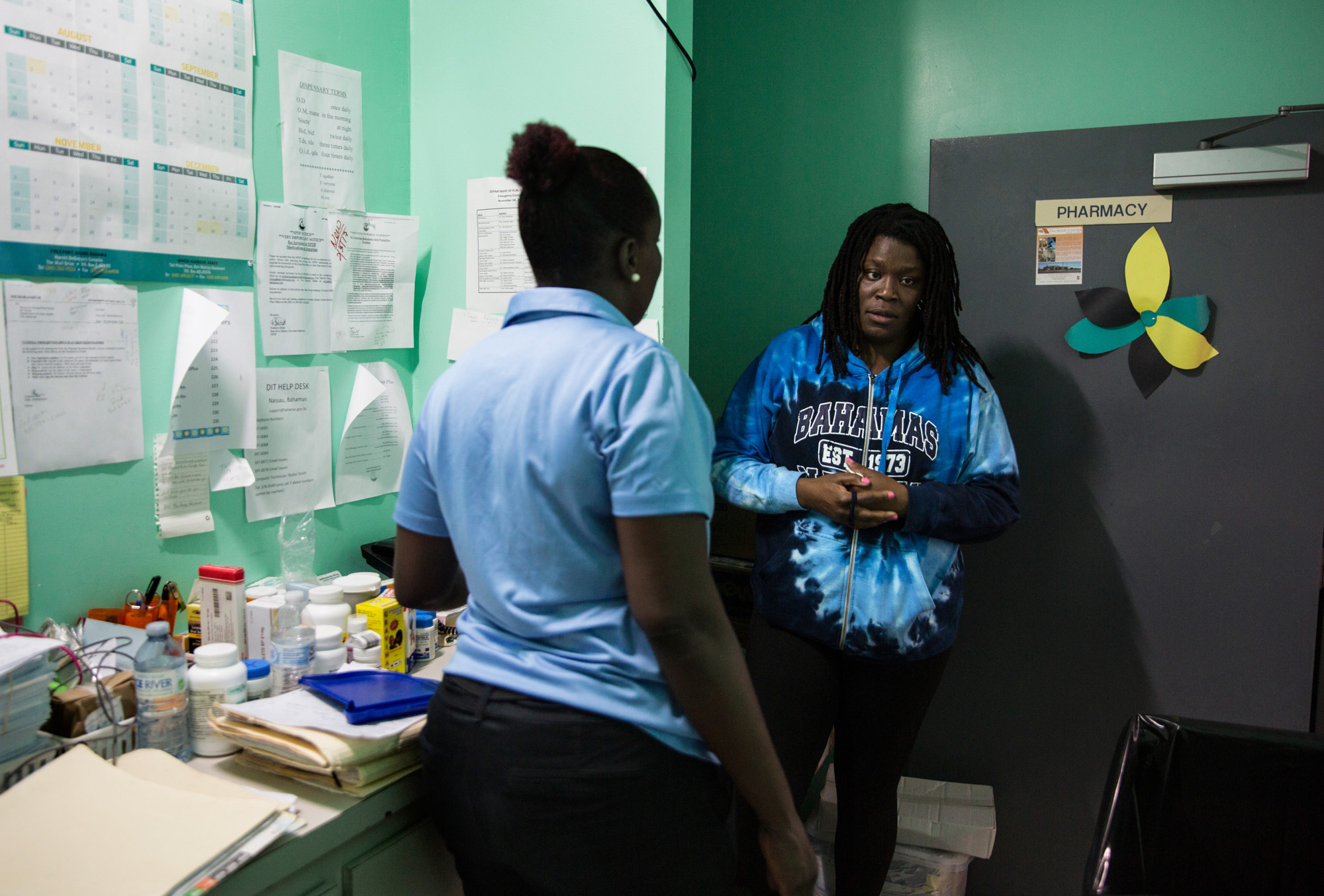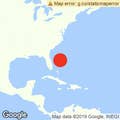
THE BAHAMAS — They’d been hot and sticky for so long they almost forgot what AC felt like, so they blasted it, turning Cooper’s Town Community Clinic on Great Abaco Island into a glorious “ice box.”
Regaining power on Monday was a massive, hard-fought win for a scrappy group of medical volunteers who, for nearly two weeks, have been working nonstop to restore the health center, which not only provides vital medical care but serves as a community gathering point.
“We finally got a massive generator delivered by the Dutch navy yesterday, so we made the entire clinic an ice box,” said Brian Wilson, a team lead with Humanity First’s Disaster Response.
Hurricane Dorian left the pink clinic’s white columns, tile floors, and exam rooms mostly intact. But powerful gusts and a massive storm surge damaged the roof, flooded hallways, and ruined an untold amount of supplies. All the containers and sterile tools are contaminated and full of mold. They no longer have lab tests or ways to communicate.
The clinic’s entire 12-person staff also lost their homes. Most nurses have left because they “couldn’t take it,” said Dr. Charmaine Cornish, who has been working at the clinic since 1995. “We had a lot of staff, but they’re gone.”
As of last week, one nurse was still listed as missing. Dr. Latoya Munroe, who oversees health care for the northern part of Abaco and runs Cooper’s Town and two other clinics, is trying to treat patients and help plan her country’s response to a looming health care crisis, all while mourning the loss of a family member and figuring out where she is going to live.
“We have a long way forward,” the 34-year-old said.

The storm, one of the strongest Atlantic hurricanes in history, destroyed thousands of homes across the Abaco and Grand Bahama islands, killing an unknown number of residents, leaving 1,300 still listed as missing, and severely crippling the nation’s health care system.
Munroe said her community dubbed the storm a “Cat 10.” After visiting her home and other areas, the UN’s secretary-general called it “category hell.”
About 10 clinics across the two islands are nonoperational, according to the United Nations. On Grand Bahama, the sole hospital, Rand Memorial, is full and flecked with mold, health officials reported. The public clinic in Marsh Harbour is also overwhelmed but mostly functioning. The status of four other facilities is still unknown.
Restoring the clinic has been a chaotic, exhausting slog that has required doctors to double as home renovators and water desalination experts. Last week, as another storm loomed, the thrashing sound of strong wind and rain propelled the team from their cots as they quickly realized what was happening. It was raining. Inside the clinic.
Two of the doctors had already been out with flashlights since 4 a.m., working to extract a large generator from its vulnerable place in the open yard without damaging it.
Inside, it was a mad dash to protect supplies. Volunteers, some barefoot and in wet pajamas, others in flip-flops and basketball shorts, rushed to close windows by removing the wooden planks holding up the heavy sills. Others worked to hang a large blue tarp from the ceiling to thwart the leaks from damaging what work the medical team had accomplished.
The Bahamas government has deemed the Cooper’s Town clinic a “high priority” because it has no access to water and is running on one generator. Before the storm, the facility offered everything from dental work and diabetes care to Pap smears and childbirth services. The staff is responsible for an area of more than 4,000 people and sees about 30 patients a day, most of whom are working class and a sliver of whom, about 10%, are undocumented Haitians. Many have serious illnesses, like diabetes and hypertension.
It was more than a health center, though. Its cool, bright waiting room and shaded front porch also doubled as a community hangout, especially for elderly residents. They would sit and chatter and laugh, batting at each other’s knees and sharing stories about their kids.
“The same older man would come every week and bring you fish,” Munroe said. “It’s an elderly community. They want people to speak with, to hang out with. They want their feet rubbed. Everyone is related to everyone here. They need that connection.”

Like Humanity First, which is working directly with the Ministry of Health and the Humanitarian Aid and Rescue Project, scores of other aid organizations, doctors, physician assistants, EMTs, and health care groups have streamed into the islands the past two weeks, setting up pop-up facilities, funneling in pharmaceuticals, patching up people’s lacerations, and delivering supplies to stranded communities.
“We’re treating people as we go while also renovating a clinic,” said Wilson. “You go to bed thinking you’re good, and then you wake up at 5 a.m. and you have water coming through the roof. Every day is like that.”
In the background, a nurse yelled out to a doctor walking into an exam room: “They were spraying for bees in there, you might want to smell it.”
The volunteers are from across the US and Canada. Right after the hurricane hit, they arrived at the Toronto airport asking for “cheap, cheap, cheap economy flights” and to check 57 bags carrying 3,000 pounds of supplies and gear.
“The person checking us in was like, ‘Yeah, uh, I need to call a manager,’” Wilson laughed.
Since then, the team has been sleeping on cots and exam room tables, averaging about four hours a night. To shower, they bring soap to the ocean. They drink “cowboy coffee” — a concoction made from beans and boiled water in a pot — in the morning and flush the toilet only sparingly, to stretch one bucket of water for as long as they can. To get a text out, they stand in a specific spot on a stoop near the road, arms frozen, to catch that rare, fleeting service bar.
“Some of my team are treating cuts while others are pulling out waterlogged ceiling tiles,” said Wilson, who has been doing disaster response for more than a decade. “The reality is you can be the best surgeon in the world, but if you don’t get food and water and shelter to these people, they are going to die.”
The clinic’s slim staff is hustling and coping. They’re bleaching water and smiling for their regular patients while mustering up enough energy to go home at night and pull out their own soggy ceiling tiles and process their own grief and trauma.
“We need a lot, but what we really need is psychological help,” Munroe said. “That’s what’s going to be what encourages people to keep going when they have no food, house, when they’ve lost their children.”

Focused and fast-talking, the doctor lists off challenges now hindering the island health facility, which was “running like a machine” since she took over the area this summer. She’s frustrated at her government, which she said has been “a bit of a letdown” and could have “acted more swiftly” to get help and resources to people.
“We need power. There are no gas stations in this immediate vicinity. Communication is kaput, so any emergency that does follow...I don’t know,” she said before pausing. “Emergency planes don’t get here fast enough. All of that compounded now is going to be a lot, but things we could cope with if the storm hadn’t wrecked our homes too.”
She’s trying to take one thing at a time. She has a 4-year-old son who now has no school to attend. Her family technically doesn’t have anywhere to live. Her husband, Dennie Williams, still hasn’t processed that his older brother died trying to escape a swift swell that enveloped the house he was hunkering down in. They found his body two days after the storm. He’d been trying to open his car door.
Sitting in the clinic’s waiting room, Williams, a 40-year-old pilot, said it all still doesn’t feel real. He knows he told his brother’s wife, on her birthday, and their four kids that her husband died. He understands that the WhatsApp voice message his brother left him on Sunday saying he “would be safe here” was the last time he would hear his voice, but, at the same time, he doesn’t.
“When you have someone die, when it happens to you, your blood, it’s like...” he said. “It’s a part of me that happened to. You can’t wrap your mind around that.”

